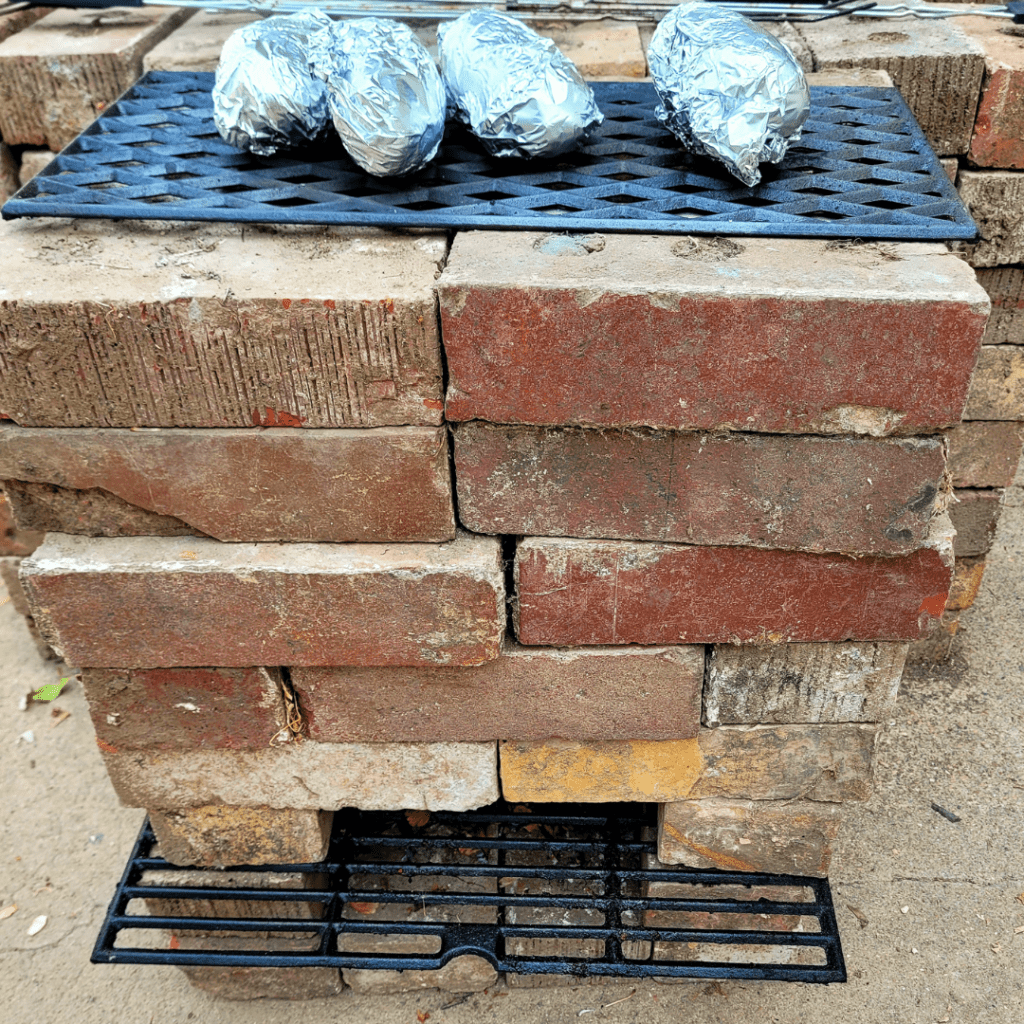Is your family ready for the next quake? Learn how to do effective earthquake drills, stay safe, and practice “shake, rattle, and roll” techniques so everyone knows exactly what to do when the ground starts moving.
Have you ever felt that sudden jolt and shaking that signals an earthquake is happening? For those living in seismic zones, it’s a startling experience that can strike without warning. While we can’t predict when the next big one will hit, we can prepare ourselves and our loved ones by conducting regular earthquake drills. By the way, earthquakes are my biggest fear!
Imagine being caught off guard during a powerful tremor, unsure of what to do or where to seek shelter. It’s a frightening scenario, but one that can be easily avoided with proper training and practice. That’s where earthquake drills come in – they’re essential for ensuring your safety and giving you the confidence to react quickly and effectively when the ground starts to rumble.
Did you know that practicing earthquake drills can significantly reduce the risk of injury during a real event? In fact, studies have shown that individuals who participate in regular drills are more likely to respond appropriately and minimize potential harm. It’s a simple yet crucial step in safeguarding yourself, your family, and your community.
What Is In This Post?
In this comprehensive guide, I’ll be discussing earthquake drills, exploring what they entail, how to prepare for them, and the steps to take during and after the drill. I’ll also discuss the importance of involving your entire community and provide valuable tips for staying safe during an actual earthquake. Whether you’re a seasoned pro or new to earthquake preparedness, this blog post will equip you with the knowledge and tools to confidently face any seismic event that comes your way.
This is a pinnable post. Tap or hover over any image in this post to pin to your Pinterest Boards.
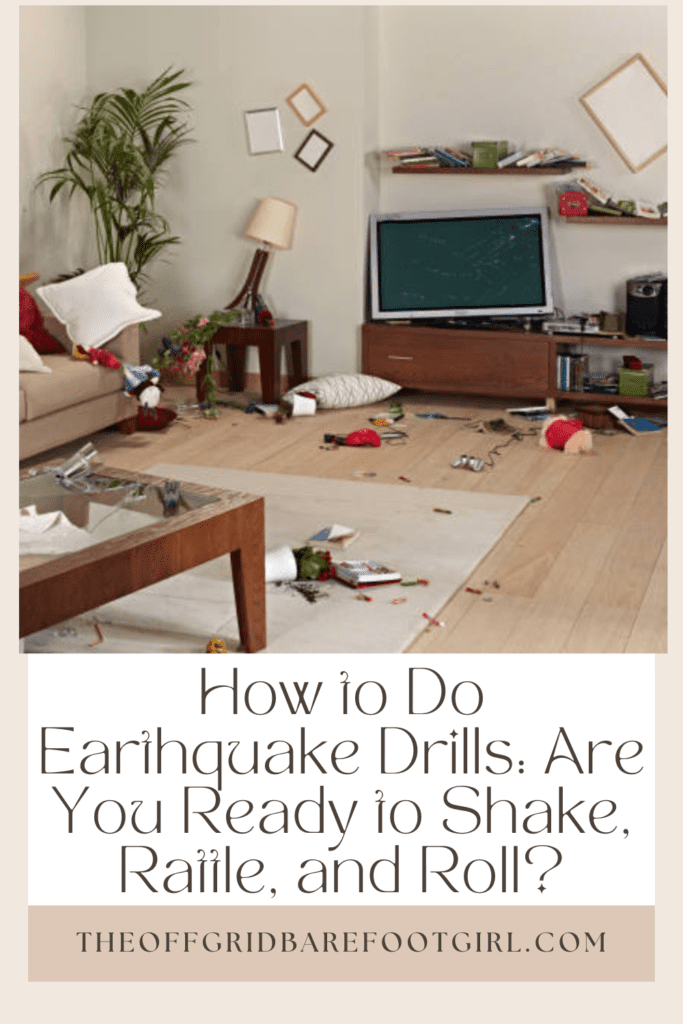
What Are Earthquake Drills?

Earthquake drills are crucial exercises designed to prepare individuals, families, and communities for the potential occurrence of an earthquake. They are an essential part of emergency preparedness, helping people understand what to do before, during, and after an earthquake strikes.
What Are Earthquake Drills?
Earthquake drills simulate the experience of an actual earthquake, allowing participants to practice the recommended safety procedures. These drills typically involve taking cover under sturdy furniture, evacuating buildings if necessary, and following predetermined emergency plans.
Understanding the Importance of Emergency Preparedness
Natural disasters like earthquakes can strike without warning, making it imperative to be prepared. Earthquake drills help raise awareness about the potential risks and provide valuable training on how to respond effectively. By practicing these drills regularly, individuals and communities can develop the muscle memory and confidence needed to react quickly and appropriately during a real earthquake.
Types of Earthquake Drills
There are various types of earthquake drills, each tailored to different settings and scenarios. Some common examples include:
- Drop, Cover, and Hold On Drills: These drills focus on teaching individuals how to protect themselves during an earthquake by dropping to the ground, taking cover under a sturdy table or desk, and holding on until the shaking stops.
- Evacuation Drills: These drills simulate the process of safely evacuating a building or area after an earthquake. They help identify safe evacuation routes, assembly points, and procedures for accounting for all occupants.
- Tabletop Exercises: These drills involve discussions and walkthroughs of hypothetical earthquake scenarios, allowing participants to explore decision-making processes and coordination efforts without physically simulating the event.
Benefits of Conducting Regular Drills
Regular earthquake drills offer numerous benefits, including:
- Increased Preparedness: Drills help individuals and communities develop the knowledge, skills, and confidence needed to respond effectively during an actual earthquake.
- Identification of Weaknesses: Drills can reveal potential vulnerabilities or gaps in emergency plans, allowing for improvements and adjustments.
- Stress Reduction: By practicing earthquake safety procedures, individuals can reduce anxiety and stress levels during a real event, enabling them to act more calmly and effectively.
- Community Engagement: Earthquake drills can bring communities together, fostering a sense of unity and collective responsibility for emergency preparedness.
Remember, being prepared is key to minimizing the potential impact of an earthquake. Regular drills play a crucial role in ensuring that you and your community are ready to shake, rattle, and roll when the ground starts to tremble and rumble.
Preparing for an Earthquake Drill

When it comes to earthquakes, being prepared is crucial. An earthquake drill can help you and your family practice the right actions to stay safe during an actual seismic event. Here’s how to prepare for an effective earthquake drill:
Assessing Your Risk and Vulnerabilities
Start by evaluating your risk and potential hazards in your home or workplace. Identify areas where objects might fall or collapse during an earthquake. Look for possible escape routes and safe spots to take cover.
Developing an Emergency Plan
Create an emergency plan that outlines what to do before, during, and after an earthquake. Designate meeting spots, establish communication methods, and assign responsibilities to family members or coworkers. Practice your plan during the drill.
Gathering Necessary Supplies and Equipment
Ensure you have an emergency kit stocked with essential supplies like water, non-perishable food, a first aid kit, flashlights, and batteries. Keep copies of important documents in a waterproof container. Secure heavy furniture and appliances to prevent them from toppling over.
During the drill, practice the key actions:
- Drop to the ground.
- Take cover under a sturdy table or desk.
- Hold on until the shaking stops.
Additionally, practice evacuating the building safely and meeting at the designated spot. Remember, preparedness is key to staying calm and responsive in the face of an earthquake. Regular drills can help ingrain these life-saving habits and keep you ready for when the earth decides to shake, rattle, and roll.
During the Earthquake Drill
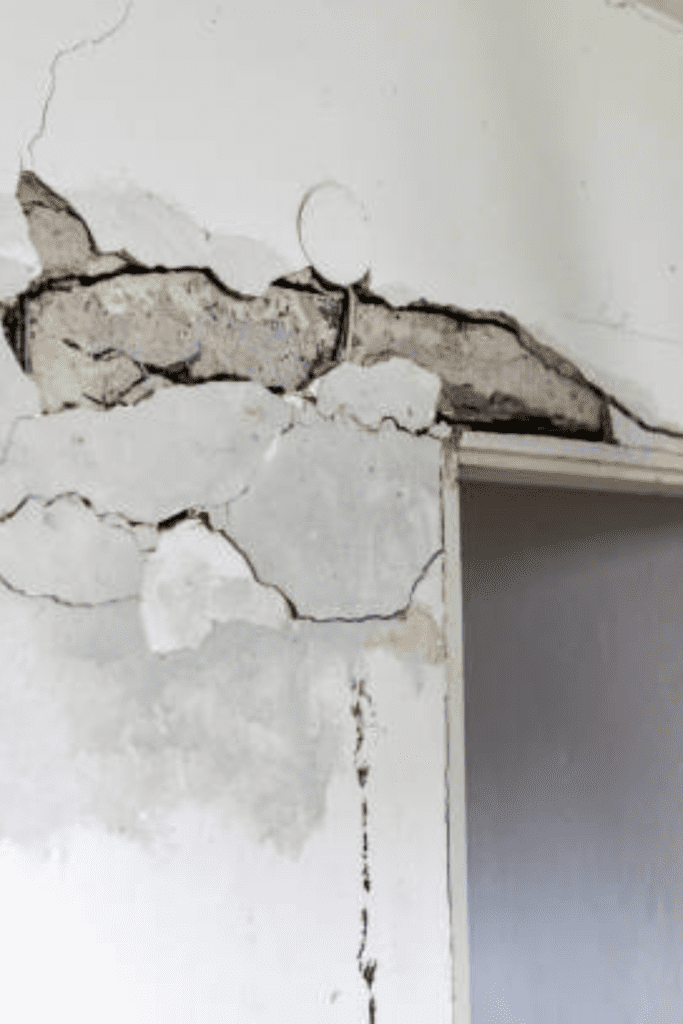
When an earthquake strikes, knowing what to do can mean the difference between staying safe and potentially sustaining injuries. During an earthquake drill, the primary focus is on the “Drop, Cover, and Hold On” technique, safely evacuating the building, and accounting for all occupants.
Drop, Cover, and Hold On Technique
The “Drop, Cover, and Hold On” technique is the safest response during an earthquake. Drop to the ground, cover your head and neck with your arms, or take shelter under a sturdy piece of furniture, and hold on until the shaking stops. This position protects you from falling objects and prevents potential injuries caused by violent shaking.
Evacuating the Building Safely
Once the shaking stops, it’s crucial to evacuate the building quickly and calmly. Follow the designated evacuation routes and proceed to the designated assembly area. Avoid using elevators, as they may become inoperable during an earthquake. Stay alert for any potential hazards, such as fallen debris or damaged structures.
Accounting for All Occupants
After evacuating the building, it’s essential to account for all occupants. Designated leaders or safety personnel should take attendance and report any missing individuals to emergency responders. This step ensures that no one is left behind and helps coordinate any necessary search and rescue efforts.
By practicing these critical steps during an earthquake drill, you’ll be better prepared to respond effectively in the event of a real earthquake. Remember, staying calm, following instructions, and being proactive can save lives.
After the Earthquake Drill
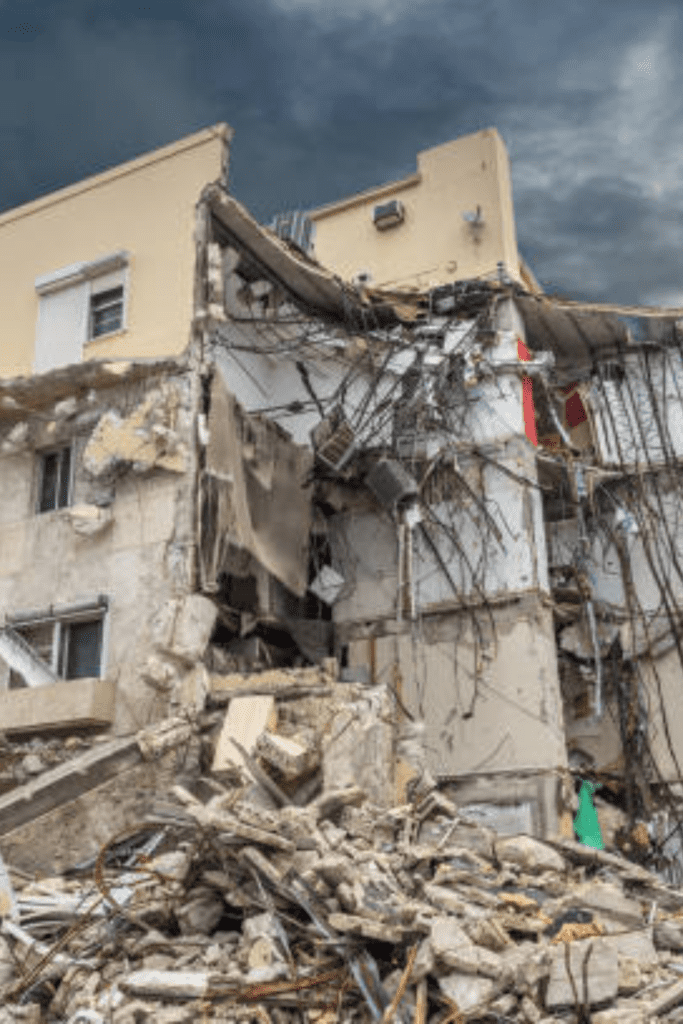
Once the earthquake drill is over, the real work begins. It’s crucial to assess the effectiveness of the drill and identify areas for improvement to ensure you’re prepared for an actual earthquake.
Evaluating the Drill’s Effectiveness
After the adrenaline rush subsides, take a moment to reflect on how the drill went. Did everyone follow the proper procedures? Were there any issues or challenges that arose? Gather feedback from participants and observers to pinpoint what went well and what didn’t. This evaluation process is vital for improving your earthquake preparedness.
Addressing Identified Weaknesses
Based on the feedback and observations, make a list of areas that need improvement. Perhaps there was confusion about the evacuation routes, or some participants struggled to find a safe spot to drop, cover, and hold on. Prioritize these weaknesses and develop strategies to address them.
Reinforcing Earthquake Safety Protocols
Use the drill as an opportunity to reinforce the importance of earthquake safety protocols. Review the proper drop, cover, and hold-on techniques, as well as evacuation procedures. Remind everyone of the designated meeting spots and emergency communication plans. Repetition and practice are key to ensuring these protocols become second nature.
Conducting regular earthquake drills is essential, but the real value lies in the post-drill evaluation and improvement process. By critically assessing the drill’s effectiveness, addressing identified weaknesses, and reinforcing safety protocols, you can ensure that you and your community are truly prepared to shake, rattle, and roll when the next earthquake strikes.
Involving the Entire Community
Preparing for an earthquake is a collective responsibility that involves everyone in the community. By engaging schools, workplaces, local authorities, and the general public, we can create a comprehensive plan and ensure that everyone is ready to respond effectively when the ground starts shaking.
Engaging Schools and Workplaces
Schools and workplaces are critical locations where earthquake drills should be conducted regularly. Employees and students should be trained on proper safety procedures, such as “Drop, Cover, and Hold On.” Designated safe areas should be identified, and evacuation routes should be clearly marked and practiced.
Coordinating with Local Authorities
Collaborating with local authorities, such as emergency services and disaster management agencies, is essential. They can provide valuable insights, share best practices, and coordinate community-wide efforts. Regular meetings and joint exercises can help identify potential gaps and streamline response plans.
Raising Public Awareness
Public awareness campaigns play a vital role in educating the community about earthquake preparedness. Through various channels, such as social media, community events, and public service announcements, people can learn about the importance of having an emergency kit, creating a family plan, and practicing earthquake drills at home.
“When the entire community is involved, we can build a culture of preparedness that minimizes the impact of earthquakes and saves lives.” – Jane Smith, Emergency Management Coordinator
By actively involving schools, workplaces, local authorities, and the general public, we can create a resilient community that is ready to shake, rattle, and roll when an earthquake strikes. Together, we can enhance our collective ability to respond effectively and recover quickly from these natural disasters.
Staying Safe During an Actual Earthquake
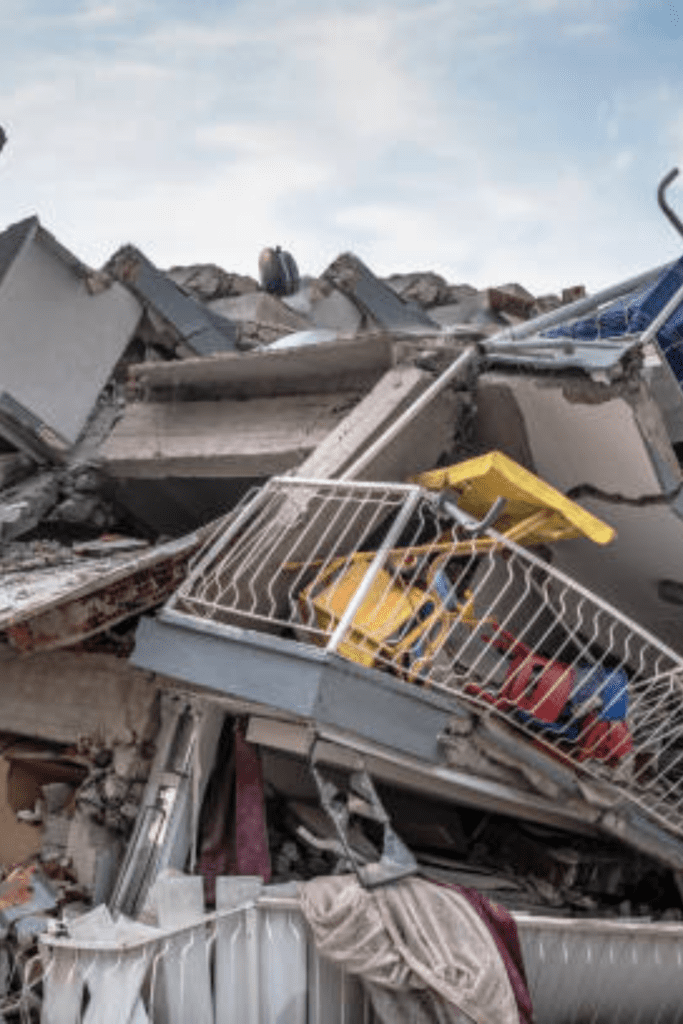
When the ground starts shaking, it’s crucial to stay calm and follow the proper safety procedures. Here’s what you need to know to stay safe during an actual earthquake:
Recognizing the Signs of an Earthquake
The first step is recognizing the signs of an earthquake. These can include:
- The ground shaking or rolling
- Walls or furniture swaying
- Objects falling from shelves or countertops
If you notice these signs, don’t wait for an official warning. Immediately drop, cover, and hold on.
Following Established Emergency Procedures
Once you’ve recognized the signs of an earthquake, follow these emergency procedures:
- Drop to the ground (before the shaking drops you).
- Cover your head and neck with your arms or take shelter under a sturdy table.
- Hold on to your shelter until the shaking stops.
If you’re outdoors, stay away from buildings, power lines, and other hazards. Move to an open area and drop to the ground, covering your head and neck.
Seeking Medical Assistance if Needed
After the shaking stops, check yourself and others for injuries. If anyone is hurt or trapped, call emergency services immediately. Listen to local authorities for further instructions and be prepared for aftershocks.
“The better prepared you are, the less you will have to fear during an earthquake.” – Dr. Lucy Jones, Seismologist
By recognizing the signs, following established procedures, and seeking medical assistance if needed, you can stay safe and minimize the risks during an actual earthquake. Remember, staying calm and taking the right actions can save lives.
Conclusion
When disaster strikes, being prepared can mean the difference between life and death. Practicing earthquake drills is crucial to ensure you and your loved ones know exactly what to do when the ground starts shaking. By following the steps I covered – from securing your home to identifying safe spots and conducting regular drills – you’ll be ready to respond swiftly and confidently.
Don’t wait until it’s too late. Involve your entire community, from schools to workplaces, in these life-saving exercises. Remember, staying safe during an actual earthquake boils down to following the same principles: drop, cover, and hold on until the shaking stops. With practice and preparedness, you’ll be equipped to handle nature’s unpredictable forces.
Earthquakes may be inevitable, but their impact doesn’t have to be devastating. Empower yourself with knowledge and preparedness – the peace of mind you’ll gain is invaluable. So, let’s shake things up and embrace a culture of readiness, one drill at a time. Together, we can face any challenge, even when the earth moves beneath our feet.
Practicing earthquake drills is a smart step toward self-sufficiency and safety—learn more about self-sufficiency in How to Live on Raw Land, and practicing earthquake drills is a key step in readiness, and you can learn more about building a full emergency plan in The Complete Guide to Emergency Preparedness: Everything You Need to Thrive in Any Situation.
Resources: Here are some helpful resources for further information.
- How to Earthquake-Proof Your House – By UpNest
- Protect Your Property from Earthquakes – By FEMA
- How to Design an Earthquake Resistant Home – By Fox Blocks
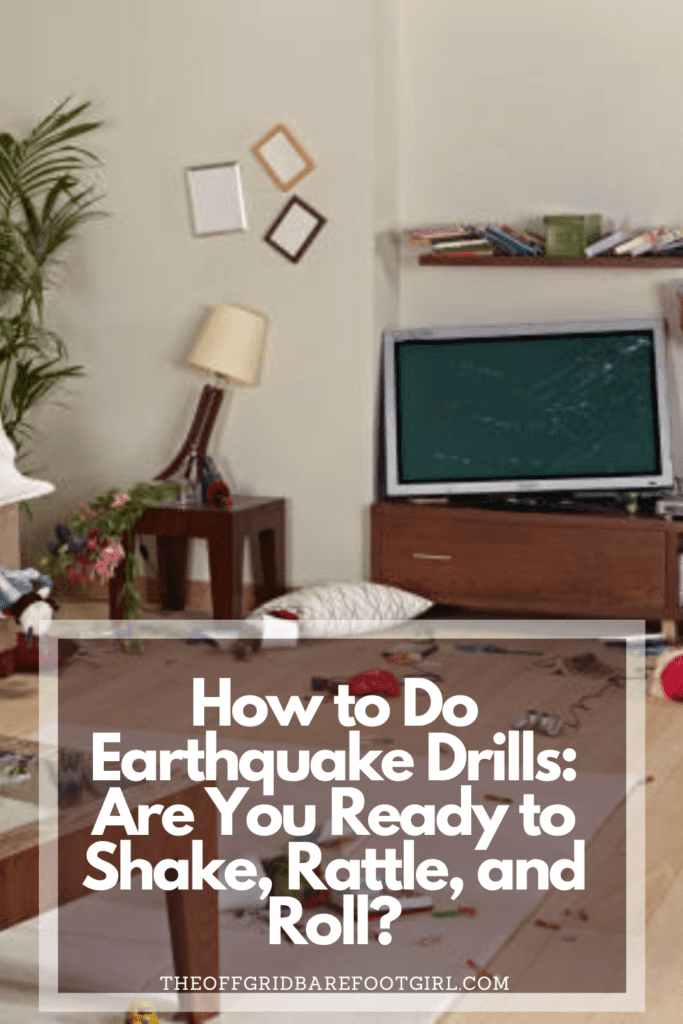
Summary
I hope I have inspired you to help you prepare your family for emergencies with these helpful tips and products. Here are some other links you may be interested in reading!
Crafting the Ultimate Emergency Action Plan for Your Family
How to Create a Cozy Home Anytime of the Year!
The Best Portable Generators By Generac
Best Ideas for Backpacking Meals: Fuel Your Adventure!
End Times Headlines: How Prepared Are You Really?
Hiking the High Desert: Survival Tips You Should Never Ignore!
SHTF Planning: How to Survive the High Desert Bootcamp!
Survival Skills Training: Into the Backwoods with a Master Survivalist!
Choosing the Best Survival Cooking Kit: The Ultimate Guide
Survive the Peaks: The Best Avalanche Gear on the Market!
Bug In and Survive a Grid Down: Survival Training Course!
Bugout Bags and Survival Training Course with Grid Down Consulting!
Self-Sufficiency and Survival Posts!
Get These Vital Emergency Survival Equipment Now!
Bartering: How To Negotiate Commodities with Astonishing Results!
Warning: Why You Need Whole Home Water Purification Now!
How to Design Off Grid Power Systems for Your Homestead
How Many Watts Does a Fridge Use? Energy Efficient Guide
The Best States for Off Grid Living: Unplugged and Thriving
Composting Toilet Systems Are Surging: Ditch Your Septic Tank Now!
Are Greywater Tanks the Key to Sustainable Living? Find Out Now!
How to Live Off-Grid: 11 Tips to Survive and Thrive!
Are Survival Food Kits Worth It? The Truth Revealed!
Do You Really Need Faraday Bags? The Shocking Truth Revealed!
The Best Doomsday Preppers Blogs to Follow Now Before SHTF!
The Ultimate Camping Gear Checklist: Everything You Need for an Adventure
The Ultimate Spring Cleaning House Checklist: Deep Clean with Me!
How Supporting Farmer’s Markets Makes a Difference
Eco-Friendly Christmas: How to Have an Eco-Friendly Christmas
How to Winterize Your Home: Prepare for Jack Frost’s Wrath!
Proven Hacks to Make Your Christmas Tree Survive
What Thanksgiving Teaches Us About Survival
Homeless Survival Hacks to Overcome Adversity
More Self-Sufficiency Posts!
Is Your Car Ready for Winter? The Ultimate Checklist for Your Winter Emergency Car Kit
What The Walking Dead Can Teach Us About Survival: The Walking Dead Survival Tactics
Get Lockdown Ready: Best Dollar Tree Survival Items
Understanding Water Purification Methods for Survival: Best Practices Explained
Thirsty for Survival: Expert Guide to Emergency Water Prep Tactics
The Benefits of Urban Homesteading: Revolutionize Your City Life
Practical Pantry Prepper: Essential Guide
How to Grocery Shop Once a Month
What Should Be in A 72-Hour Survival Kit?
Buy or Die: Prepper Items You Need Now
How to Learn 58 Self-Sufficient Skills Right Now
Road to Self-Sufficiency: How to Start Your Journey
If you were encouraged by this post, I invite you to check out my FREE Printables Page for fun free printables, planners, and charts.
ENTER MY FREE Printables Page HERE
Blessings,
The Off Grid Barefoot Girl





